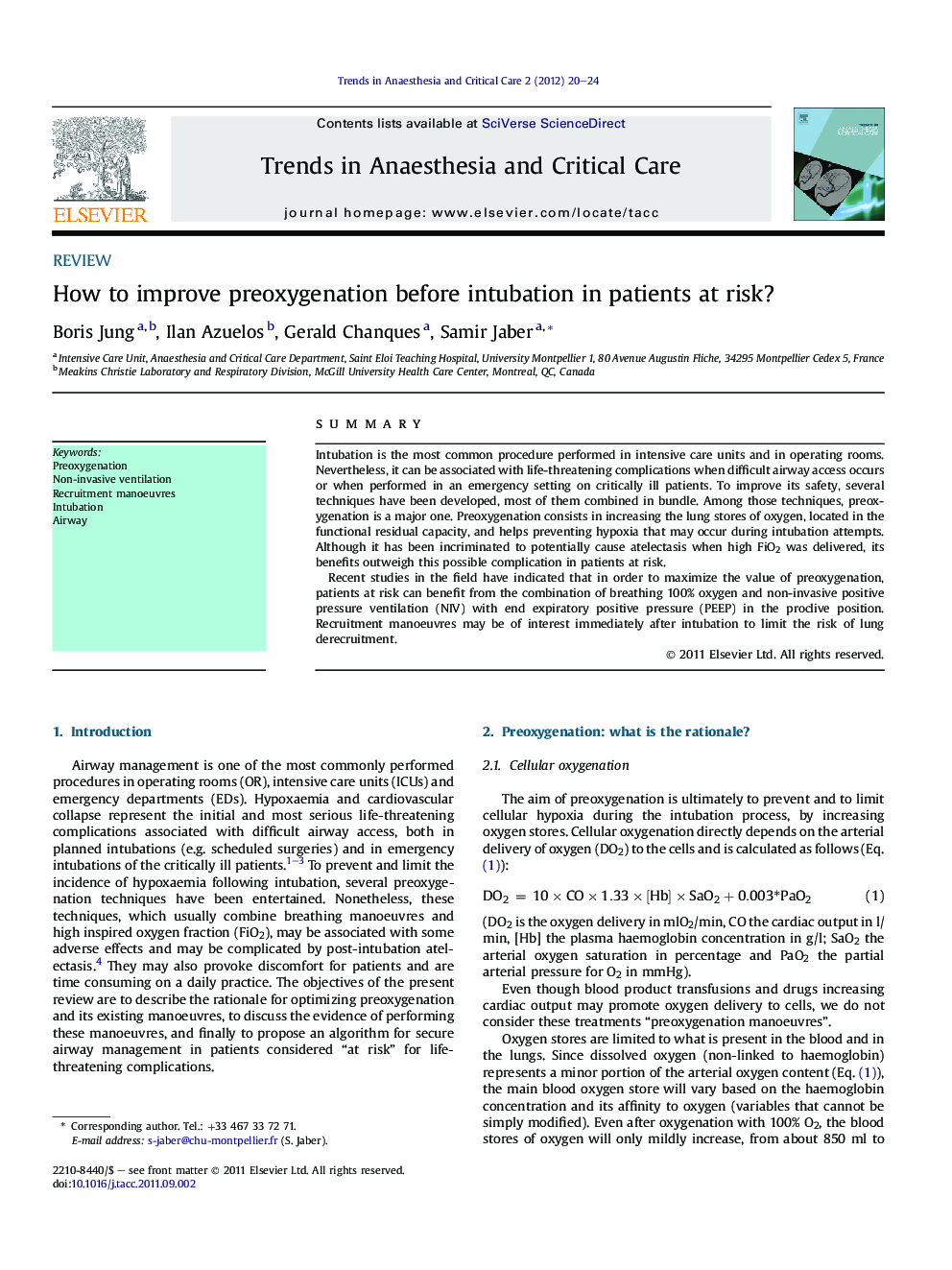| Article ID | Journal | Published Year | Pages | File Type |
|---|---|---|---|---|
| 2772703 | Trends in Anaesthesia and Critical Care | 2012 | 5 Pages |
SummaryIntubation is the most common procedure performed in intensive care units and in operating rooms. Nevertheless, it can be associated with life-threatening complications when difficult airway access occurs or when performed in an emergency setting on critically ill patients. To improve its safety, several techniques have been developed, most of them combined in bundle. Among those techniques, preoxygenation is a major one. Preoxygenation consists in increasing the lung stores of oxygen, located in the functional residual capacity, and helps preventing hypoxia that may occur during intubation attempts. Although it has been incriminated to potentially cause atelectasis when high FiO2 was delivered, its benefits outweigh this possible complication in patients at risk.Recent studies in the field have indicated that in order to maximize the value of preoxygenation, patients at risk can benefit from the combination of breathing 100% oxygen and non-invasive positive pressure ventilation (NIV) with end expiratory positive pressure (PEEP) in the proclive position. Recruitment manoeuvres may be of interest immediately after intubation to limit the risk of lung derecruitment.
